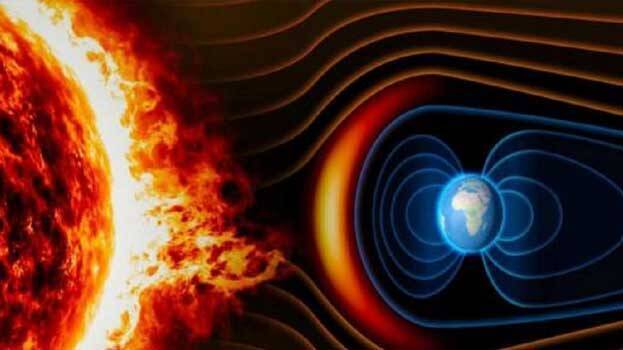

The Centre of Excellence in Space Sciences India (CESSI) has warned that a geomagnetic storm of 429 -575 kilometre per second will hit the earth on Thursday. It could result in adverse effects, said CESSI.
The sun, which is nearing ‘solar maxima’, has been exploding with a Coronal Mass ejection for the past few months. Many of them had passed without damaging earth. However, experts opine that the impact could spark a G2-class geomagnetic storm.
//CESSI SPACE WEATHER BULLETIN//11 April 2022//SUMMARY: QUIET TO MODERATE SPACE WEATHER CONDITIONS// A halo CME was detected by SOHO LASCO on 11 April. Our model fit indicates a very high probability of Earth impact on 14 April, 2022 with speeds ranging between 429-575 km/s + pic.twitter.com/MRFNuLI2hS
— Center of Excellence in Space Sciences India (@cessi_iiserkol) April 11, 2022
The National Oceanic and Atmospheric Administration (NOAA), NASA among other US agencies have been monitoring the coronal mass ejection. The NASA has warned that the geomagnetic storm may intensify after it strikes earth due to the extremely rapid solar wind stream.
The incoming #solarstorm could bring #aurora to mid-latitudes April 14-15. Chances of reaching G2-level conditions are 80% at high latitudes & 20% at mid-latitudes. Radio #blackout risk remains low, but amateur #radio operators & #GPS users face disruptions on Earth's nightside. pic.twitter.com/dPj3ia3MbF
— Dr. Tamitha Skov (@TamithaSkov) April 12, 2022
The geomagnetic storms are measured with a scale that has a rating from one to five with G1 being minor and G5 being extreme. The Wednesday’s storm is likely to be of the G2 level. It may disrupt radio signals and power grids. Moreover, it can cause voltage alarms in high-altitude power stations.